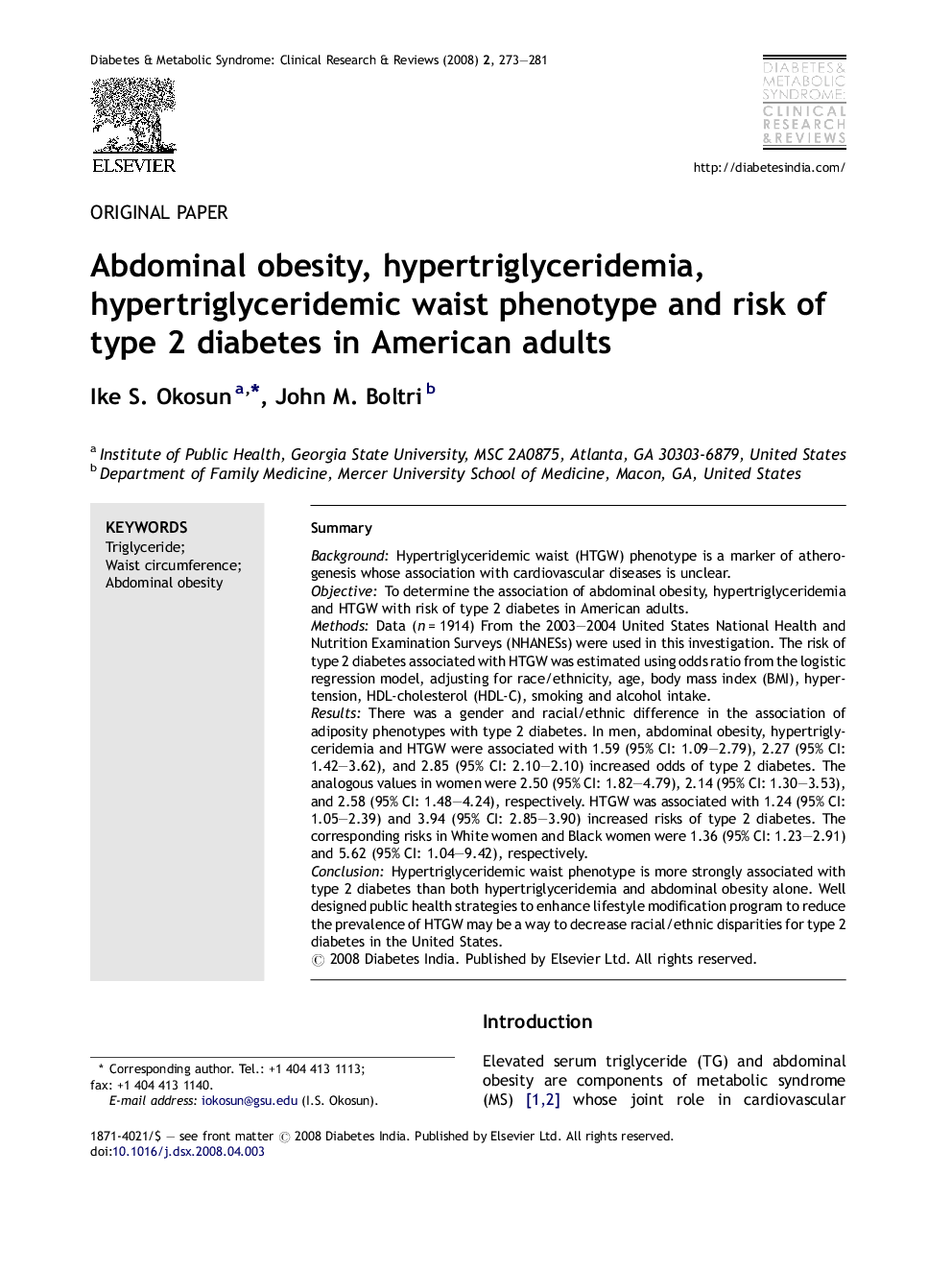| کد مقاله | کد نشریه | سال انتشار | مقاله انگلیسی | نسخه تمام متن |
|---|---|---|---|---|
| 2910402 | 1174624 | 2008 | 9 صفحه PDF | دانلود رایگان |

SummaryBackgroundHypertriglyceridemic waist (HTGW) phenotype is a marker of atherogenesis whose association with cardiovascular diseases is unclear.ObjectiveTo determine the association of abdominal obesity, hypertriglyceridemia and HTGW with risk of type 2 diabetes in American adults.MethodsData (n = 1914) From the 2003–2004 United States National Health and Nutrition Examination Surveys (NHANESs) were used in this investigation. The risk of type 2 diabetes associated with HTGW was estimated using odds ratio from the logistic regression model, adjusting for race/ethnicity, age, body mass index (BMI), hypertension, HDL-cholesterol (HDL-C), smoking and alcohol intake.ResultsThere was a gender and racial/ethnic difference in the association of adiposity phenotypes with type 2 diabetes. In men, abdominal obesity, hypertriglyceridemia and HTGW were associated with 1.59 (95% CI: 1.09–2.79), 2.27 (95% CI: 1.42–3.62), and 2.85 (95% CI: 2.10–2.10) increased odds of type 2 diabetes. The analogous values in women were 2.50 (95% CI: 1.82–4.79), 2.14 (95% CI: 1.30–3.53), and 2.58 (95% CI: 1.48–4.24), respectively. HTGW was associated with 1.24 (95% CI: 1.05–2.39) and 3.94 (95% CI: 2.85–3.90) increased risks of type 2 diabetes. The corresponding risks in White women and Black women were 1.36 (95% CI: 1.23–2.91) and 5.62 (95% CI: 1.04–9.42), respectively.ConclusionHypertriglyceridemic waist phenotype is more strongly associated with type 2 diabetes than both hypertriglyceridemia and abdominal obesity alone. Well designed public health strategies to enhance lifestyle modification program to reduce the prevalence of HTGW may be a way to decrease racial/ethnic disparities for type 2 diabetes in the United States.
Journal: Diabetes & Metabolic Syndrome: Clinical Research & Reviews - Volume 2, Issue 4, December 2008, Pages 273–281